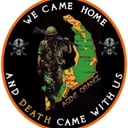Why didn't WWI American pilots have parachutes?
Parachutes did exist, although rudimentary by today’s standards. American pilots never wore them because the higher ups—who had never flown themselves before—believed that these devices would make a pilot likely to jump out at the first hint of danger. Too many planes would be lost. Early aircraft were little more than flying deathtraps, the dry wooden frames and spars of their crafts covered in fabric doped with a highly flammable stiffening agent. It’s difficult to imagine a more flammable pyre—and that’s even before the spark-spitting engine was added. The greatest fire threat lay in the rounds fired from an enemy airship, which could easily set the main or auxiliary gas tank afire.
Pilots vowed to exercise their last shred of human dignity and decide their own fate by jumping overboard. Still others took their service pistol aboard for another grisly option. “Cannot help but feel,” Eddie Rickenbacker confided to his journal, “that it was criminal negligence on the part of those higher up for not having exercised sufficient forethought and seeing that we were equipped with parachutes for just such emergencies.”
The understanding that pilots were difficult to train and far more valuable than aircraft didn’t sink in until a year after World War 1 ended. Parachutes were then issued.
More Info:
www.thehistoryreader.com







